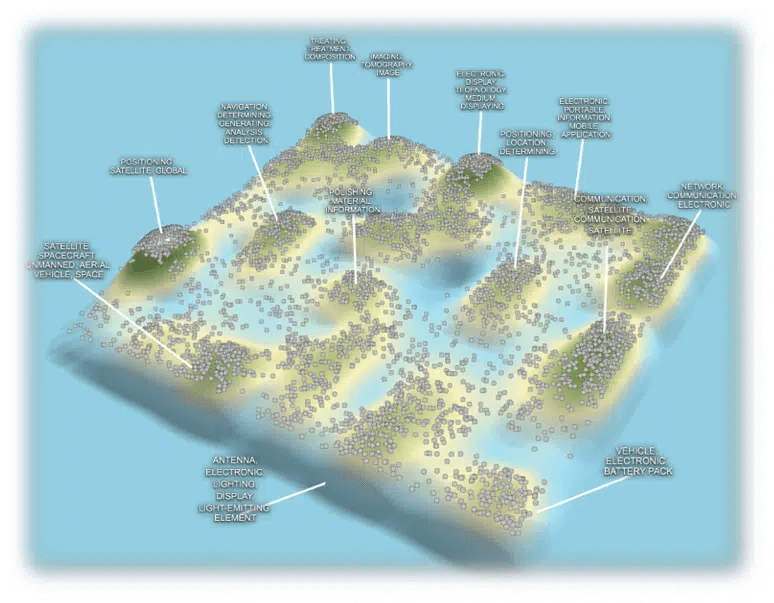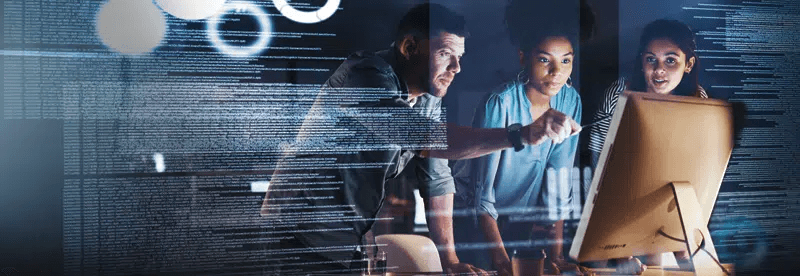Software patents are a waste of time and money. Or are they? A well-quoted statistic states that 97% of all patents will fail to recoup their filing cost.1 It’s also been said that half of all businesses will fail within the first 5 years, and only one third will see their 10th anniversary. However, there are an estimated 100 million new tech startups each year.
It’s hard to reconcile these numbers without an appreciation for the difficulty every startup faces in distinguishing themselves from the rest of the pact. This is very succinctly stated in an old Norwegian proverb, “Experience is the best teacher, but the tuition is high.”
The Important Role of Patents
How do patents play into this haze of statistics? Patents are a tool to help a company achieve success. Fundamentally, patents aid a company in securing a competitive advantage. However, they are not the only tool in the toolbox. In the world of intellectual property, the protection of intangible assets – assets of the mind – is bundled into patents, copyrights, trade secrets, and trademarks. Each of these distinct types of intellectual property protections tries to categorize those ideas of the mind and provide the originator some degree of privileges.
There is little doubt that there is value in software. Certainly, companies such as Apple, Google, Microsoft, and Adobe attribute their value to more than just software. However, software is, undeniably, a major factor in establishing each company’s valuation. Do companies such as these invest in software patents, even when 97 percent of patent filings fail to recoup their filing costs? Yes.
Consider Google. Once a startup, the company filed a software patent directed to “a method for node ranking in a linked database” (that database being the internet). That patent, filed in 1997, was the first of many for an industry leader that now lays claim to 25,994 patents,2 many of which are software patents. This begs the question why would a company invest in so many patents when it is likely that 97 percent of them will fail to recoup their filing costs?
Patents are a snapshot of time. This single document identifies individuals who have invented new technology and who own the rights established by the patent. It describes the new concept and its background sufficiently so that others can learn, make, and use the idea, and it lays out the scope of rights claimed.
Patents also attempt to normalize the technology into a classification system to aid in understanding the technology without having to understand a particular technology’s verbiage. This aids in establishing whether a future patent indeed covers something new and not obvious. Lastly, when taken in the aggregate, patents identify trends. Looking at filings and/or patent grants, one can identify new inclinations of technology development as well as gaps. You can also determine which companies are investing in certain areas of technology while others are exploring in different sectors. Patents can be a treasure trove of information.
Patents as a Business Resource
Look again at Google. In 2006, the company introduced a product called Google Patents.3 Up to this point, patents, which are public documents, were searched and analyzed using specialized tools or viewed through a rather antiquated system offered by the United States Patent and Trademark Office. Patents are designed, after all, to promote innovation by disclosing and teaching others of these new innovations.
By using their search engine prowess, Google opened to the public a vast resource. Google also collects data. It is widely known that information regarding search habits and preferences represents a valuable asset. So too does information on what sort of technology is being examined, the rates of patent filings, patent allowances, company assignments, etc. And while a single patent can be powerful, data collected from thousands of patents is very telling of where lies the interest of businesses and the potential for further innovation.
The image below, produced by a similar search tool, shows the power of patent analytics. This quick analysis was a search conducted on a space related software patents. With a single glance, one can see the sectors in which interest has been keen while other areas of technology seemingly have been lagging. Add a temporal aspect to this rendering and trends become visible and predictions become possible.

Protection Beyond Patents
Unfortunately, patents are not flexible. They are limited since they are a fixed depiction of an innovation. While certain aspects of a patent application can be modified, they are, for all intents and purposes, a static document.4 Software, on the other hand, is continuously evolving. Innovation embodied in software is often incremental and patents, as illustrated above, are public documents. Continuously filing patent applications on each new innovation is costly and provides, under one argument, a road map for competition. So, there is some validity in the argument that software just doesn’t fit into the patent framework.
For the past decade, copyrights have been the quick-fix workaround for software protection. Copyrights protect an original work of authorship fixed in a tangible medium. Software is typically original and fixed in a tangible medium. And with the creation of each new version of code, a new copyright is created. Copyrights thus resolve the dilemma of how to protect something that is continually evolving. But copyrights only protect holders from unauthorized copying or use of the copyrighted work.5 Copyrights do not protect from independent discovery. That task falls to patents. A better approach to protecting software, then, is not copyrights OR patents but rather copyrights AND patents.6
A patent provides its owner with the right to exclude others from making, using, selling, or importing the patent invention defined in the patent’s claims.7 These are powerful rights, but beyond giving an owner the opportunity for their day in court, a patent is a recognition by a third-party of an innovation. That recognition and evidence of title is often an invitation to negotiate.
Said differently, one value of a patent, especially for a startup, lies in its invitation to the table. Patents have their limits, but to ignore their contribution in protecting valuable technology, including that technology embodied in software, is to give up that seat at the table. Innovation without protection is philanthropy.
The Evolution of Software Patents
The framework by which we evaluate software patents continues to evolve. It is this evolution that provides the backdrop of the overreliance on copyright protection with respect to software. The concept of a patent has been around for a long time. Indeed, there is evidence of the grant of patent rights all the way back to ancient Greece.8 Software, by comparison, is a new kid on the block.
The development of legal doctrine is slow and methodical. This painstakingly deliberate process is by design. Having a body of law that flips back and forth on a whim is likely to cause chaos and even anarchy. While the patent system is adept at dealing with inventions that are mechanical or chemical, or even those related to a process, software has presented some challenges. Initially, the patent system, at least in the United States, tried to treat software patents as it had other types of technology.9 That didn’t go very well, and as a result a glut of software patents were filed and later invalidated. However, the market maintained that there is value in software. And where value lies so does a desire for recognition and reward.
Over the past two decades, numerous cases in our legal system have examined and reexamined software inventions to more definitively identify what is and is not patentable.10 Undoubtedly, the process will continue. In the meantime, innovation continues as does the need to protect that innovation. To adequately protect software, one must safeguard what the software does and how it does it, not merely its expression on a tangible medium. Patents squarely address this need.
Looking Ahead
When software embodies an invention, a patent lays the groundwork to establish that innovative party as a technology leader and provide him or her with a seat at the table. As the area of software development evolves and it creates new innovations, more patents may be justified even as the law is progressing, recognizing that some of these patent applications may not be as valuable as others. Google, Apple, and Microsoft certainly recognize this concept.
Protecting software via patents is imperfect. So too are copyrights as a means to protect all of the innovative features found in software. And as discussed herein, patents have limitations that must be considered in determining how best to apply this cornerstone of intellectual property protection.
However, failing to seek protection offered thought the patent mechanism is failing to recognize the inherent limitations of our legal system. Companies that succeed are not those that ignore these characteristics, but rather embrace them and learn how to use them to their advantage. Patents will continue to be part of the solution for software protection, as are copyrights and trade secrets.
Resources
1 See By Stephen Key, In: Starting a Business
2 Extracted from a combined assignee search for Google using PatSnap as of 10 April 2019.
3 See https://patents.google.com
4 The patent specification which describes the claimed technology sufficient to enable one of reasonable skill and art to make and use the invention cannot be materially modified after filing. While new matter can be added to what is thereafter called a continuation-in-part, this new patent application possesses a new priority date and becomes a separate patent application.
5 A copyright provides the owner the right to reproduce and make copies of an original work, the right to prepare derivative works based on the original work, the right to distribute copies to the public by sale or another form of transfer, such as rental or lending, the right to publicly perform the work, the right to publicly display the work, and the right to perform sound recordings publicly through digital audio transmission. See 17 USC 1-8, 10-12 and 17.
6 The author recognizes trade secret protection must be considered and utilized to fully protect innovation found in software. While omitted in this discussion the importance of a sound trade secret protection strategy and its integration in an overall means to protect software should not be underestimated.
7 see 35 U.S.C. 271
8 See https://en.wikipedia.org/wiki/History_of_patent_law
9 Challenges of the patent system’s ability to adapt to new technology is well documented throughout history. While the concept of rewarding those who contribute to the growth of technology and society is firmly based, the meets and bounds of those limits are often ill-defined. For example, the introduction of manned powered flight by the Wright Brothers brought a flurry of aviation related patents whose limits were later redefined in numerous actions before the court.
10 A long litany of Supreme Court and Federal Circuit cases have struggled with the patentability of software. As early as 1972 with the Supreme Court’s ruling in Gottschalk v. Benson the Court examined whether software feel within the guidelines of patentability stated in 35 USC 101. Since then the Courts have revisited this issue no less than 20 times; each time offering additional guidance on what is and is not eligible for patent protection.


